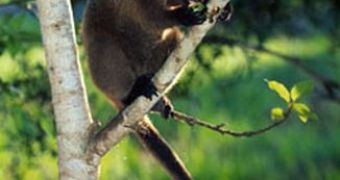Today, kangaroos are Australia's wildlife symbols and the largest living marsupials. Now, a 25-million-year-old marsupial fossil seems to represent the oldest species in the lineage of the kangaroos. Unlike the hopping man-sized kangaroos, these ones ran on all fours, had carnivorous-like fangs and might have been arboreal.
"This is really the great, great, great, great grandfather of modern kangaroos," co-researcher Ben Kear, a La Trobe University paleontologist, told "The Age" newspaper.
"The near-complete skeleton of the prehistoric kangaroo was found in Queensland state in the 1990s and represents a new species called Nambaroo gillespieae," said Kear.
This species belonged to an extinct family of kangaroos called Balbaridae, which in time was replaced by the modern family of kangaroos, Macropodidae.
"The study found the Nambaroo, which was about the size of a small dog and had canine fangs, had big, muscly forearms that showed it galloped or bounded like a brush-tailed possum." said Kear.
As Nambaroo also possessed opposable "big" toes and flexible feet, this means it could have climbed trees, like modern tree kangaroos (Dendrolagus) from New Guinea and northeastern Australia (but Dendrolagus have evolved from ground-dwelling hopping kangaroos, as during the night they descend to the ground to graze, employing the hopping locomotion). Nambaroo inhabited dense forests, thus it could have eaten fruits and fungi.
"You've got this primitive kangaroo, imagine it's climbing low branches, bounding around the forest floor, eating fungi, eating fallen fruit. It's very different to what we would imagine from your average kangaroo... that you see today. The Nambaroo skeleton would help scientists learn more about how climate change affected the evolution of kangaroos over millions of years." said Kear.
Kangaroos turned into larger grazing beasts moving around by hopping, as the Australia's clime became drier and grasslands replaced many forests, 10 to 15 million years ago.
"Looking at a skeleton like this is the Rosetta Stone, it's the quintessential fossil that will give you the beginning of the whole kangaroo radiation," Kear said.

 14 DAY TRIAL //
14 DAY TRIAL //